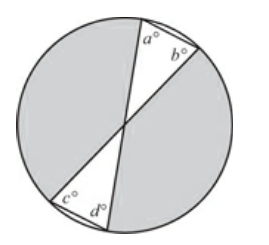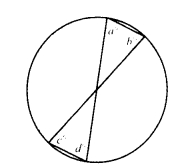This question clearly has a bit of a flaw in its wording. Certainly is that the letters to pinpoint the shaded area by Chetan came in handy.
However, I always try to look at the bright side of the story and stretch my mental muscles.
If we look at the original graph as it has been provided by the book and using logic, the solution will be easier. Of course, your solution is elegant and fine, though the arcs way to solve it I guess is a bit cumbersome. I always try to go down the road straight.
Attachment:
 shot39.jpg [ 18.31 KiB | Viewed 12788 times ]
shot39.jpg [ 18.31 KiB | Viewed 12788 times ]
Now, few easy steps
- the stem says the diameter is 20 so the radius must be 10.
- If the radius is 10 the entire area of the circle is \(100 \pi\)
At this point, the stem also says us that the shaded region is \(80 \pi\). At the time I didn't have the right graph and it looks like the following
Attachment:
 shot40.jpg [ 11.03 KiB | Viewed 12777 times ]
shot40.jpg [ 11.03 KiB | Viewed 12777 times ]
Even having this graph, is impossible to think that the shaded area is inside the isosceles triangles. it must be the outside of them. As it turns out, it is the rest of the circle. The total area is \(100 \pi\) so having \(80 \pi\) the latter represents 80% of the entire area.
From this, the area of the triangles is \(\frac{20}{100} = \frac{1}{5}\) of the entire area.
From this, we do know that inside an isosceles triangle, two sides are equal. The triangles inside the circle have the two major sides = 10. Therefore, the four angles a - b - c - d are the biggest. However, which is their measure ??
We do know that the sum of the angles is 180° if we take into account ONE triangle. Considering that the area of BOTH triangles is \(\frac{1}{5}\) of 360. We must divide 180 not by 5 BUT by 2.5 (considering ONE triangle). \(\frac{180}{2.5} = 72\)
Conclusion, \(a+b+c+d = 72*4 = 288\)








 71% (02:16) correct
71% (02:16) correct






